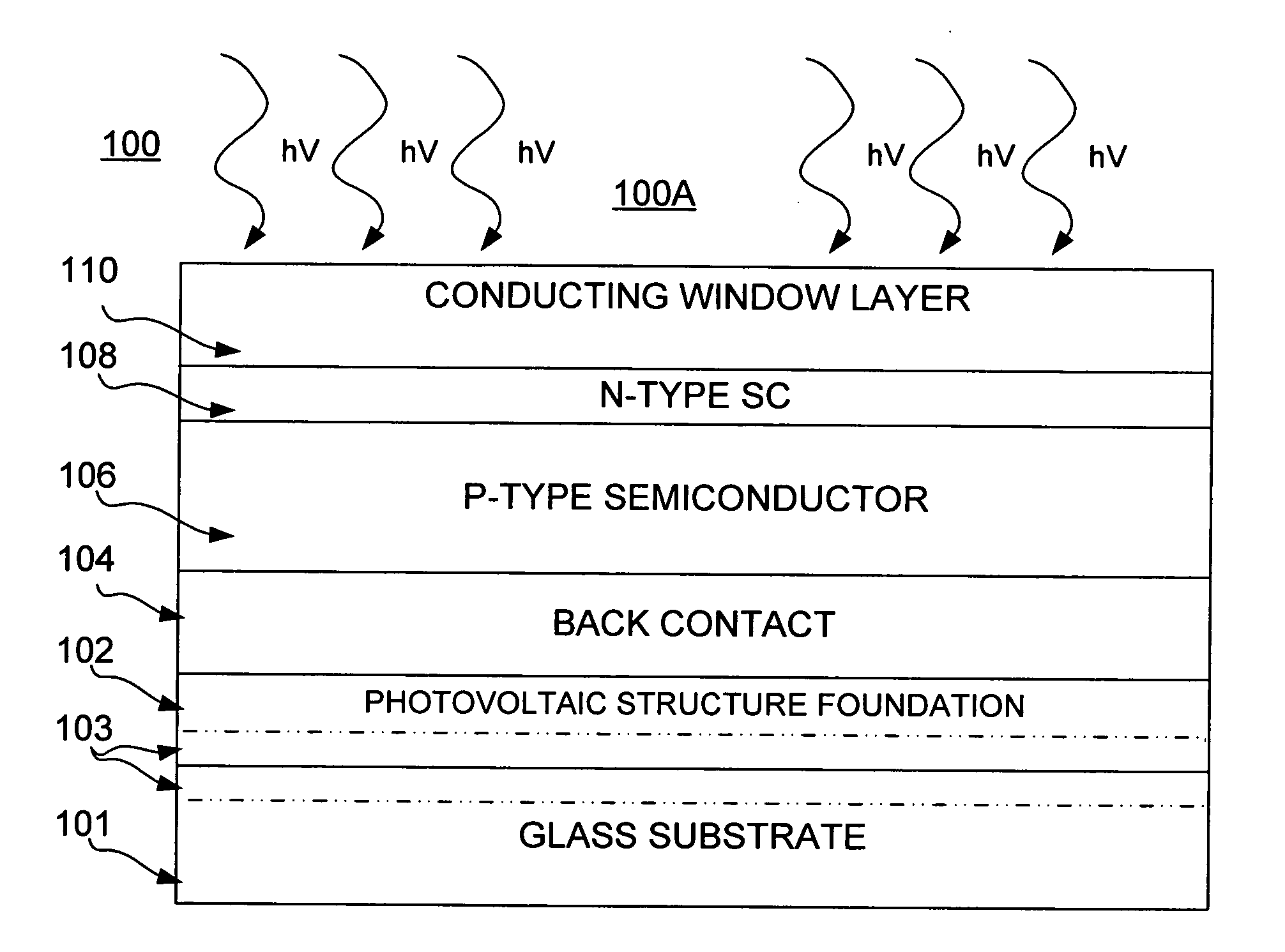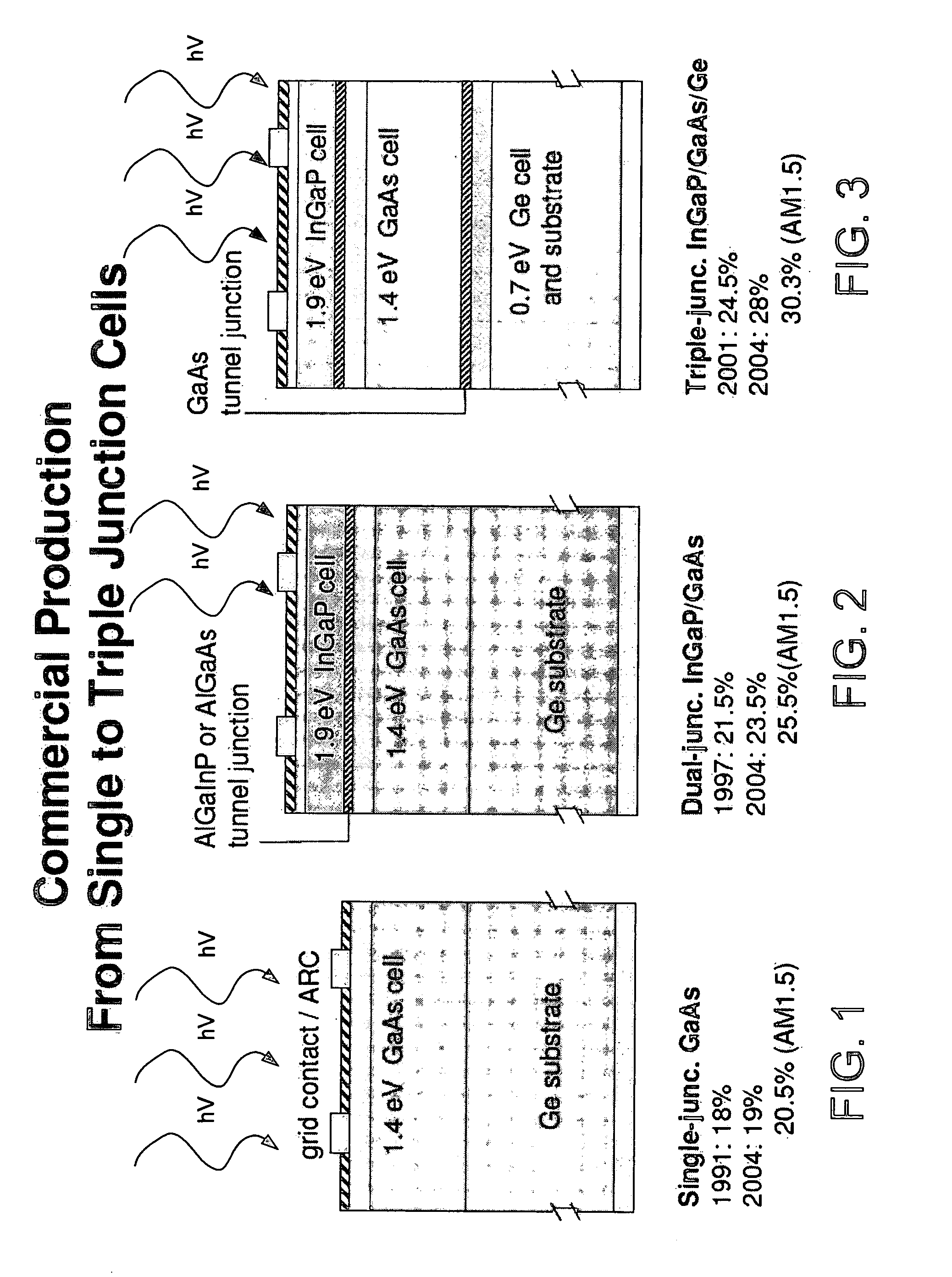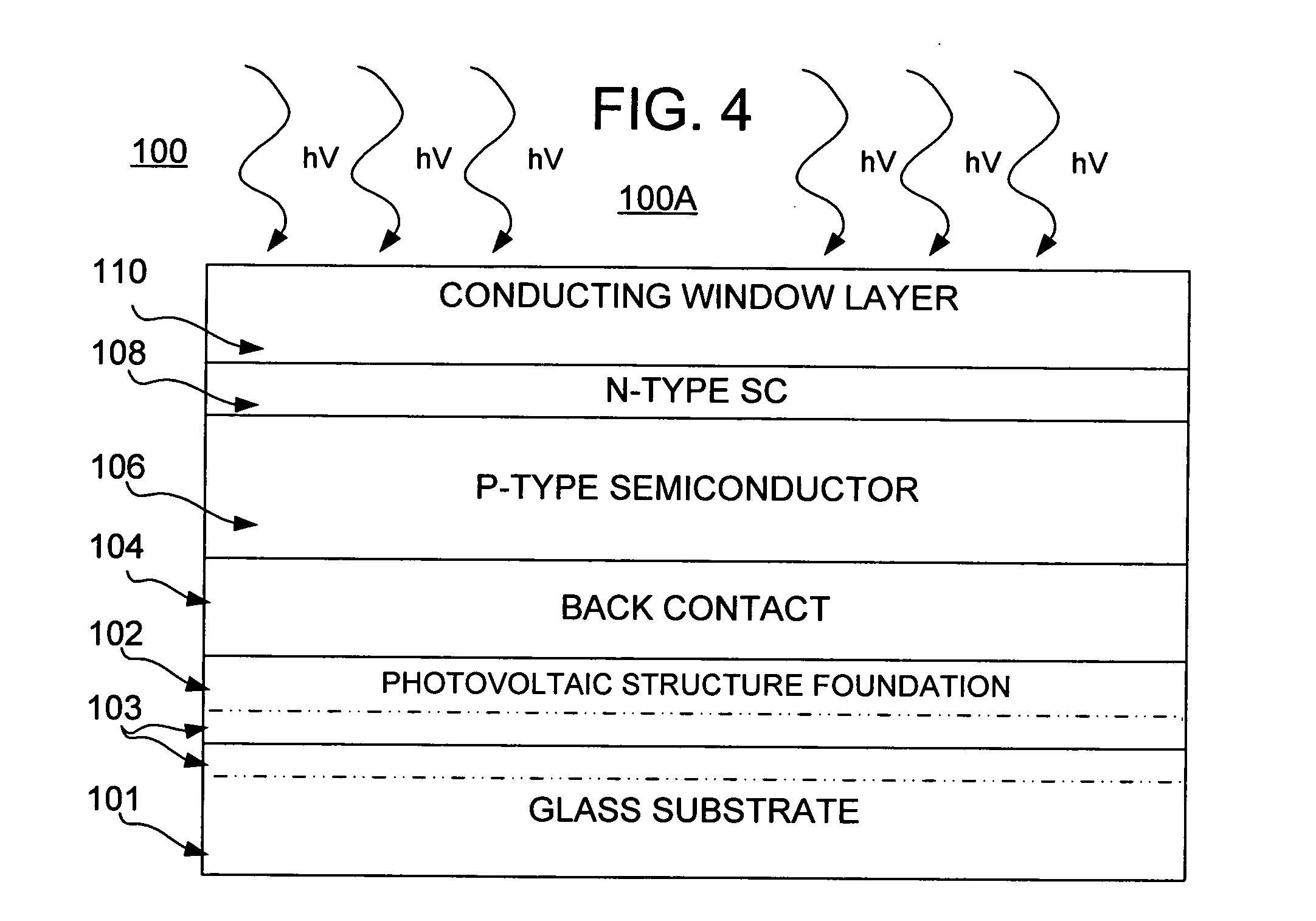The primary issues with the use of bulk Si are the cost and supply of so-called solar grade
silicon and its utilization.
With a typical
bulk crystal-Si or p-Si
solar cell of 200 microns thick, the kerf loss from
cutting wafers from boules or cast ingots is approximately 30%, significantly contributing to the overall cost.
Single crystalline wafers which are used in the
semiconductor industry can be made in to excellent high efficiency solar cells, but they are generally considered to be too expensive for large-scale
mass production.
Thin-film solar cells use less than 1% of the
raw material (
silicon or other light absorbers) compared to
wafer based solar cells, leading to a significant price drop per kWh.
This can lead to reduced
processing costs from that of bulk materials (in the case of
silicon thin films) but also tends to reduce
energy conversion efficiency, although many multi-layer thin films have efficiencies above those of bulk silicon wafers.
For a-Si, efficiency of energy conversion is a major issue, with a common range of 10%-13%.
They are also some of the most expensive cells per unit area.
Defects in the
crystal structure of the semiconductor can impede performance considerably.
Though, the highest efficiency cells often are not the most economical—for example a 30% efficient multijunction
cell based on exotic materials such as
gallium arsenide or
indium selenide and produced in
low volume might well cost one hundred times as much as an 8% efficient
amorphous silicon cell in
mass production, while only delivering a little under four times the electrical power.
Thin film Si PVS technology also has issues, inasmuch as the process temperatures used in the literature are near the
melting point of Si, so there are considerable constraints on the substrate (purity, expansion coefficient, ability to contact the
cell, etc.).
Cost is an issue for CIGS PVS, made of multi-layered thin-film composites.
Manufacturability is an issue for both CIS and CdTe PVS, which have difficulties achieving uniformity of performance over large areas.
While CIS films can achieve 11% efficiency, their manufacturing costs are high at present.
However, Cd is regarded as a toxic heavy
metal, reducing the incentive for development.
Cost also is an issue for high-efficiency
gallium arsenide (GaAs) multifunction cells, which have been developed for special applications such as satellites and
space exploration that require high-performance.
Factoring into the cost is the formation of ohmic contacts, discussed more below, to such compound semiconductors, which is considerably more difficult than with silicon.
In addition, the volatility of As limits the amount of post-deposition annealing that GaAs devices will tolerate.
Contacts are often made by first depositing the
transition metal and second forming the
silicide by annealing, with the result that the
silicide may be non-stoichiometric.
As mentioned above, manufacturing photovoltaic cells using wire-sawing bulk Si results in significant waste of prepared Si.
The high cost of Ge and GaAs substrates has limited the use of these high efficiency multijunction cells to
concentrator systems for
space power applications.
Although growth of III-V solar cells on these Ge-capped silicon substrates has been demonstrated, these cells usually show inferior
crystal quality compared to growth on GaAs or Ge substrates.
The crystal quality limits the performance of the III-V solar cells with polycrystalline films.
The former two methods, epitaxial growth and
wafer-
wafer bonding, have not resulted in satisfactory structures in terms of cost and / or
bond strength and durability.
(Due to the high temperature steps, this process is not compatible with lower-cost glass or glass-
ceramic substrates.)
The resulting SOI structure just after exfoliation might exhibit excessive
surface roughness (e.g., about 10 nm or greater), excessive silicon
layer thickness (even though the layer is considered “thin”), unwanted
hydrogen ions, and implantation damage to the silicon crystal layer (e.g., due to the formation of an amorphized silicon layer).
Lastly, the act of cleaving the silicon layer- leaves a
rough surface, which is known to cause poor
transistor operation, so the
surface roughness should be reduced to preferably less than 1 nm RA prior to device fabrication.
Disadvantageously, however, the CMP process does not remove material unifornly across the surface of the thin silicon film during
polishing.
The above shortcoming of the CMP process is especially a problem for some silicon-on-glass applications because, in some cases, as much as about 300-400 nm of material needs to be removed to obtain a desired silicon film thickness.
Another problem with the CMP process is that it exhibits particularly poor results when rectangular SOI structures (e.g., those having sharp corners) are polished.
Indeed, the aforementioned surface non-uniformities are amplified at the corners of the SOI structure compared with those at the center thereof.
Still further, when large SOI structures are contemplated (e.g., for photovoltaic applications), the resulting rectangular SOI structures are too large for typical CMP equipment (which are usually designed for the 300 mm standard wafer size).
The CMP process, however, is costly both in terms of time and money.
The cost problem may be significantly exacerbated if non-conventional CMP machines are required to accommodate large SOI structure sizes.
However, high temperature anneals are not compatible with lower-cost glass or glass-
ceramic substrates.
Lower temperature anneals (less than 700 degrees C) require long times to remove residual
hydrogen, and are not efficient in repairing crystal damage caused by implantation.
Furthermore, both CMP and furnace annealing increase the cost and lower the yield of manufacturing.
In contrast to microelectronic applications of SOI structures, photovoltaic structures are more tolerant of such defects, although such defects nonetheless adversely may affect performance of the photovoltaic cell.
While such finishing techniques as CMP and FA may improve surface characteristics, the defect-tolerance of photovoltaic structures may make them cost-prohibitive.
 Login to View More
Login to View More  Login to View More
Login to View More 


